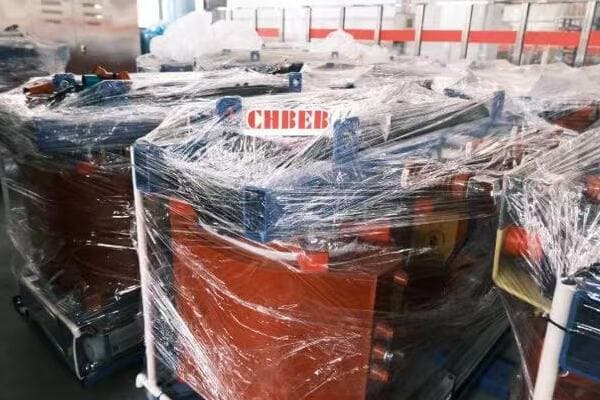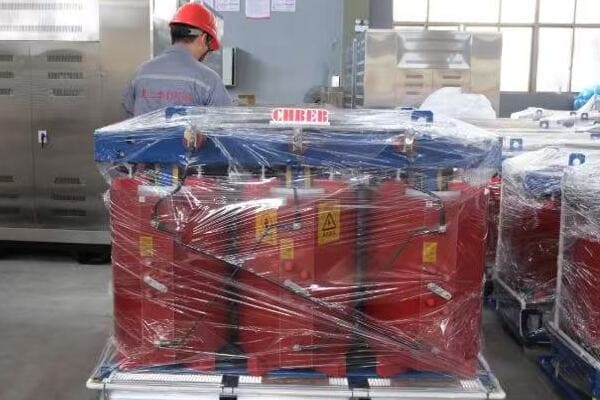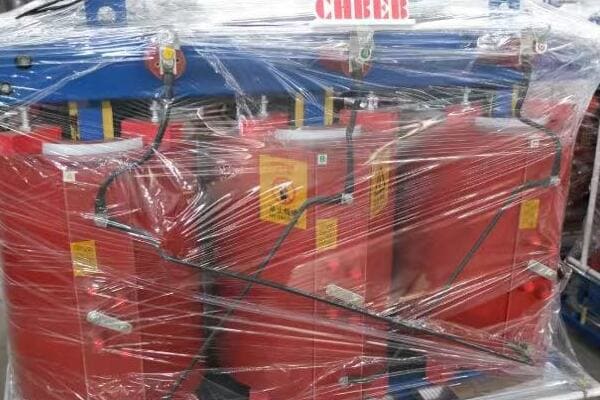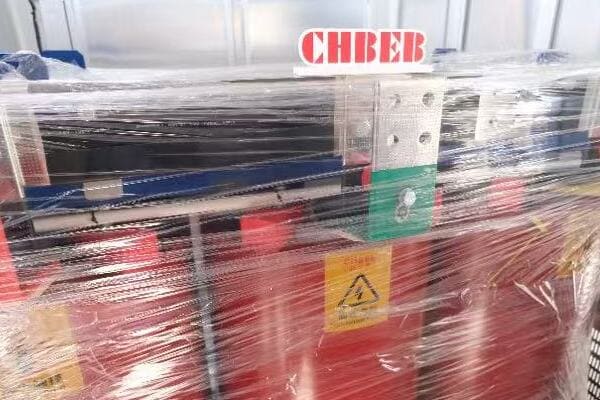Fuse vs Circuit Breaker: What’s the Difference and Which One Should You Use?
When planning an electrical system—whether for a residential building, factory, or control panel—one question almost always comes up:
"Should we use a fuse or a circuit breaker for protection?"
This decision, though often underestimated, can have major implications for safety, cost, reliability, and future maintenance.
Fuses and circuit breakers are both overcurrent protection devices, but they operate differently. Fuses are single-use devices that melt when overloaded, while circuit breakers can be reset after tripping. Fuses generally respond faster and are more compact, making them ideal for sensitive electronics and space-constrained applications. Circuit breakers offer easier resetting and are better for circuits requiring frequent switching. The choice depends on factors like response time needs, maintenance preferences, and installation requirements.
In this article, I’ll break down the real differences between fuses and circuit breakers, helping you make the right choice for your application. We’ll explore their working principles, compare key features, and provide practical guidelines for selection. Whether you’re a procurement specialist, an electrical engineer, or a project manager, this guide will equip you with the knowledge to make informed decisions about electrical protection in your systems.
What Is a Fuse and How Does It Work?
Have you ever wondered what happens inside that small glass tube or plastic housing when an electrical fault occurs? Fuses are often the unsung heroes of electrical safety, but how exactly do they protect our circuits and equipment?
A fuse is a simple yet effective overcurrent protection device. It consists of a metal wire or strip that melts when too much current flows through it, breaking the circuit and stopping the flow of electricity. This sacrificial design ensures that the fuse fails safely before other components in the circuit can be damaged. Fuses are rated for specific voltages and currents, and they come in various types such as cartridge fuses, blade fuses, and surface mount fuses for different applications.
Key Aspects of Fuses
Let’s explore the main features and workings of fuses:
- Basic Structure and Components
- Operating Principle
- Types of Fuses
- Response Characteristics
- Advantages and Limitations
Basic Structure and Components
The anatomy of a fuse:
- Metal wire or strip (the fusible element)
- Enclosure (glass, ceramic, or plastic)
- Terminals for connection to the circuit
I remember dissecting my first fuse as a young engineer. The simplicity of its design—just a thin wire inside a glass tube—belied its critical role in electrical safety. This hands-on experience really drove home the elegance of the fuse’s design.
Operating Principle
How a fuse protects your circuit:
- Normal operation: Conducts electricity without issue
- Overcurrent condition: Wire heats up and melts
- Circuit interruption: Creates an open circuit, stopping current flow
During a recent industrial project, we had to explain the fuse operation to a client who was skeptical about their reliability. Demonstrating the melting process using a controlled test setup not only convinced them but also highlighted the importance of proper fuse selection for their specific application.
Types of Fuses
Common fuse varieties:
- Cartridge fuses (used in industrial applications)
- Blade fuses (common in automotive systems)
- Surface mount fuses (for electronic circuit boards)
Here’s a quick comparison of common fuse types:
| Fuse Type | Typical Application | Current Range | Advantages |
|---|---|---|---|
| Cartridge | Industrial equipment | 0.1A – 600A | High interrupting capacity |
| Blade | Automotive | 1A – 100A | Easy visual inspection |
| SMD | Electronics | mA – few A | Space-saving |
Response Characteristics
Understanding fuse behavior:
- Fast-acting fuses for sensitive electronics
- Time-delay fuses for motors and other inductive loads
- Current vs. time curves for precise protection coordination
Advantages and Limitations
Weighing the pros and cons:
- Advantages: Fast response, no maintenance, compact size
- Limitations: One-time use, requires replacement after operation
Key points about fuses:
- They provide simple, reliable overcurrent protection
- Fuses operate by melting when exposed to excessive current
- Different types suit various applications and current ranges
- Response characteristics can be tailored to specific needs
- While effective, fuses require replacement after operation
In my experience, the simplicity of fuses often leads to underestimating their importance. I recall a project where a client insisted on using oversized fuses to prevent "nuisance" blowing. We had to demonstrate how this practice defeated the fuse’s purpose and could lead to equipment damage. It was a crucial lesson in respecting these small but vital components.
For example, in a recent solar power installation, we carefully selected specialized DC fuses for the photovoltaic arrays. The unique characteristics of solar power systems, with their potential for sustained DC arcs, required fuses specifically designed for this application. This choice was critical in ensuring long-term safety and reliability of the installation.
As we move on to discuss circuit breakers, keep in mind that while fuses excel in certain applications due to their simplicity and speed, each protection device has its own strengths and ideal use cases.
What Is a Circuit Breaker and How Does It Work?
Have you ever flipped a switch to restore power after an electrical fault? That switch is likely a circuit breaker, but have you ever wondered what’s happening inside when it trips? Circuit breakers are more complex than fuses, but they offer unique advantages in many applications.
A circuit breaker is a reusable electrical protection device that automatically interrupts the flow of current when it detects an overload or short circuit. Unlike fuses, circuit breakers can be reset after they trip, making them ideal for applications requiring frequent intervention. They operate using either a thermal, magnetic, or combined mechanism to detect faults. Circuit breakers come in various sizes and types, from small residential units to large industrial models, and can include additional features like ground fault protection or remote operation capabilities.
Key Aspects of Circuit Breakers
Let’s explore the main features and workings of circuit breakers:
- Basic Structure and Components
- Operating Mechanisms
- Types of Circuit Breakers
- Trip Characteristics
- Advantages and Limitations
Basic Structure and Components
The anatomy of a circuit breaker:
- Contacts (fixed and movable)
- Trip mechanism (thermal, magnetic, or both)
- Operating handle
- Arc extinguishing system
I recently had the opportunity to disassemble a circuit breaker during a training session. The intricate arrangement of springs, levers, and electromagnetic components gave me a new appreciation for these devices’ complexity and precision.
Operating Mechanisms
How circuit breakers protect your system:
- Thermal trip: Bimetallic strip bends with heat from overcurrent
- Magnetic trip: Electromagnet activates with high current spikes
- Combined thermal-magnetic: Provides protection against both overloads and short circuits
During a recent industrial automation project, we had to carefully select circuit breakers for motor protection. The challenge was finding devices that could handle the motor’s startup current without nuisance tripping, while still providing fast protection against short circuits. This experience underscored the importance of understanding different trip mechanisms.
Types of Circuit Breakers
Common circuit breaker varieties:
- Miniature Circuit Breakers (MCBs) for residential use
- Molded Case Circuit Breakers (MCCBs) for commercial and light industrial applications
- Air Circuit Breakers (ACBs) for high-current industrial systems
Here’s a quick comparison of common circuit breaker types:
| Type | Typical Application | Current Range | Key Features |
|---|---|---|---|
| MCB | Residential | 1A – 125A | Compact, easy to install |
| MCCB | Commercial/Industrial | 10A – 3000A | Adjustable trip settings |
| ACB | Heavy Industrial | 800A – 6300A | High interrupting capacity |
Trip Characteristics
Understanding breaker behavior:
- Instantaneous trip for short circuits
- Time-delayed trip for overloads
- Adjustable settings in some models for precise coordination
Advantages and Limitations
Weighing the pros and cons:
- Advantages: Reusable, visible ON/OFF status, can include additional protections
- Limitations: Generally slower response than fuses, more complex, higher initial cost
Key points about circuit breakers:
- They provide resettable overcurrent protection
- Circuit breakers use thermal and/or magnetic mechanisms to detect faults
- Different types suit various applications and current ranges
- Trip characteristics can often be adjusted for specific needs
- While more complex than fuses, they offer additional features and reusability
In my experience, the versatility of circuit breakers makes them indispensable in many modern electrical systems. I recall a project where we were upgrading an old factory’s electrical system. Replacing the outdated fuse boxes with modern circuit breakers not only improved safety but also significantly reduced downtime during fault conditions. The ability to quickly reset the breakers after addressing minor issues was a major advantage for the facility’s operations.
For example, in a recent data center project, we implemented a tiered protection scheme using different types of circuit breakers. We used ACBs for the main incoming supply, MCCBs for distribution boards, and MCBs for final circuits. This approach allowed for excellent selectivity, ensuring that faults were isolated at the lowest possible level, minimizing disruption to the data center’s critical operations.
As we move on to compare the key differences between fuses and circuit breakers, remember that while circuit breakers offer many advantages in terms of convenience and features, each protection device has its own strengths and ideal applications.
Key Differences Between Fuses and Circuit Breakers?
Are you struggling to decide between fuses and circuit breakers for your electrical project? The choice between these two protection devices can significantly impact your system’s safety, reliability, and maintenance requirements. But what exactly sets them apart, and how do these differences affect your decision?
Fuses and circuit breakers differ in several key aspects. Fuses generally respond faster to overcurrents but are one-time use devices. Circuit breakers are resettable and offer easier maintenance but typically have slower response times. Fuses are often more compact and cost-effective for simple applications, while circuit breakers provide better flexibility for systems requiring frequent intervention. The choice depends on factors like response time needs, maintenance preferences, space constraints, and specific application requirements. Understanding these differences is crucial for optimal system protection and operation.
Key Comparison Points
Let’s break down the main differences between fuses and circuit breakers:
- Operating Principle and Mechanism
- Response Time and Sensitivity
- Reusability and Maintenance
- Size and Installation Considerations
- Cost Factors
Operating Principle and Mechanism
How each device interrupts current:
- Fuses: Melt when overcurrent occurs, creating an open circuit
- Circuit Breakers: Use mechanical means (thermal or magnetic) to open contacts
I once demonstrated the difference in operation to a client using clear-cased fuses and circuit breakers. Seeing the fuse element melt versus the breaker contacts open really helped them understand the fundamental difference in how these devices work.
Response Time and Sensitivity
Comparing speed and accuracy of protection:
- Fuses: Generally faster response, especially for high fault currents
- Circuit Breakers: Slightly slower but offer more precise and adjustable trip characteristics
During a recent industrial project, we had to carefully consider response times for protecting sensitive equipment. In some cases, we opted for ultra-fast-acting fuses over circuit breakers to ensure the quickest possible interruption of fault currents.
Reusability and Maintenance
Long-term operational considerations:
- Fuses: One-time use, require replacement after operation
- Circuit Breakers: Can be reset multiple times, easier to maintain
Here’s a quick comparison of maintenance aspects:
| Aspect | Fuses | Circuit Breakers |
|---|---|---|
| Reusability | Single-use | Multiple operations |
| Post-fault Action | Replacement required | Manual or auto reset |
| Periodic Maintenance | Visual inspection | Functional testing needed |
| Lifespan | Indefinite if unused | May degrade over time |
Size and Installation Considerations
Physical and practical differences:
- Fuses: Generally more compact, simpler installation
- Circuit Breakers: Larger, may require more panel space, but offer easier accessibility
Cost Factors
Balancing initial and long-term expenses:
- Fuses: Lower upfront cost, but replacement costs add up
- Circuit Breakers: Higher initial investment, potentially lower long-term costs
Key points about the differences between fuses and circuit breakers:
- Fuses operate by melting, while circuit breakers use mechanical switching
- Fuses typically offer faster response times for high fault currents
- Circuit breakers are resettable and easier to maintain
- Fuses are often more compact, while circuit breakers offer better accessibility
- Cost considerations should include both initial and long-term expenses
In my experience, the choice between fuses and circuit breakers often involves balancing multiple factors. I recall a project where we initially specified circuit breakers throughout a large industrial facility for consistency. However, after a detailed analysis of certain critical circuits requiring ultra-fast protection, we ended up using a combination of circuit breakers for general distribution and specialized fuses for these sensitive areas. This hybrid approach provided the best overall protection scheme for the facility.
For example, in a recent renewable energy project, we had to protect both AC and DC circuits in a solar-plus-storage system. We used circuit breakers for the AC side, where occasional tripping was expected due to grid fluctuations, and specialized DC fuses for the battery and solar panel circuits. This combination leveraged the strengths of both protection types, ensuring optimal safety and performance of the system.
As we move on to discuss when to use fuses, remember that while these differences are significant, the best choice often depends on the specific requirements of your application. Understanding these distinctions is key to making an informed decision for your electrical protection needs.
When to Use a Fuse: Typical Applications and Advantages?
Are you wondering if a fuse is the right choice for your electrical protection needs? While circuit breakers are popular, fuses still play a crucial role in many applications. But when exactly should you opt for a fuse over a circuit breaker, and what advantages do they offer in specific scenarios?
Fuses are ideal for applications requiring fast response times, high interrupting capacities, and compact protection. They excel in protecting sensitive electronics, automotive systems, and high-fault-current industrial circuits. Fuses are preferred in scenarios where space is limited, cost is a primary concern, or where the speed of current interruption is critical. Common applications include semiconductor protection, battery systems, and certain types of motor circuits. Fuses offer advantages in simplicity, reliability, and the ability to handle high surge currents without nuisance tripping.
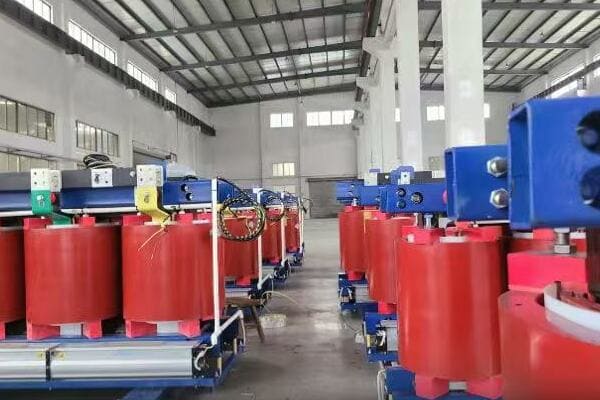
Key Scenarios for Using Fuses
Let’s explore the main applications and advantages of fuses:
- Protecting Sensitive Electronics
- Automotive Electrical Systems
- High Fault Current Industrial Applications
- Space-Constrained Installations
- Cost-Sensitive Projects
Protecting Sensitive Electronics
Safeguarding delicate components:
- Fast-acting fuses for quick response to overcurrents
- Surface mount fuses for PCB protection
- Precision fuses for test and measurement equipment
I recently worked on a project involving high-end audio equipment. We chose specialized audio fuses for critical signal paths. The ultra-fast response and low resistance of these fuses were crucial in maintaining the equipment’s high-fidelity performance while providing necessary protection.
Automotive Electrical Systems
Reliable protection in vehicles:
- Blade fuses for various automotive circuits
- High-current fuses for battery and alternator protection
- Fuse boxes for centralized, easy-to-manage protection
During a recent electric vehicle (EV) design consultation, we implemented a comprehensive fusing strategy. The combination of standard automotive fuses for auxiliary systems and specialized high-voltage fuses for the main power circuits ensured robust protection across the entire vehicle electrical system.
High Fault Current Industrial Applications
Managing extreme electrical conditions:
- High interrupting capacity fuses for transformer protection
- Semiconductor fuses for power electronics
- Current-limiting fuses to protect switchgear
Here’s a quick overview of fuse applications in different sectors:
| Sector | Application | Fuse Type | Key Advantage |
|---|---|---|---|
| Electronics | PCB protection | SMD fuse | Compact size |
| Automotive | Circuit protection | Blade fuse | Standardized, easy replacement |
| Industrial | Transformer protection | HRC fuse | High interrupting capacity |
| Renewable Energy | Solar panel strings | gPV fuse | DC arc interruption |
Space-Constrained Installations
Maximizingprotection in tight spaces:
- Miniature fuses for compact electronic devices
- Inline fuses for wiring harnesses
- Micro fuses for densely packed circuit boards
Cost-Sensitive Projects
Balancing protection and budget:
- Lower upfront costs compared to circuit breakers
- Simple replacement process reducing maintenance complexity
- Wide range of current ratings for precise protection sizing
Key points about when to use fuses:
- They excel in protecting sensitive electronic components
- Fuses are standard in automotive electrical systems
- High fault current industrial applications benefit from fuse protection
- Space-constrained installations often require fuse solutions
- Cost-sensitive projects can leverage the economic advantages of fuses
In my experience, the decision to use fuses often comes down to a combination of technical requirements and practical considerations. I recall a project for a large data center where we initially considered circuit breakers for all protection needs. However, after a detailed analysis of the power distribution units (PDUs), we opted for a hybrid approach. We used circuit breakers for the main feeds but implemented fuses within the PDUs themselves. This decision was driven by the need for extremely fast response times to protect sensitive server equipment, as well as space constraints within the PDU enclosures.
For example, in a recent renewable energy project involving a large solar farm, we faced the challenge of protecting long strings of photovoltaic panels. We chose specialized DC fuses designed for solar applications. These fuses not only provided the necessary protection against overcurrents but also had the capability to interrupt DC arcs, which are particularly dangerous in high-voltage DC systems. The compact size of these fuses also allowed for efficient design of the combiner boxes, maximizing the system’s overall efficiency.
As we move on to discuss when to use circuit breakers, remember that while fuses offer unique advantages in many scenarios, the choice between fuses and circuit breakers should always be based on a thorough analysis of your specific application requirements.
When to Use a Circuit Breaker: Ideal Scenarios and Use Cases?
Have you ever wondered why some electrical systems rely heavily on circuit breakers while others stick to fuses? Circuit breakers offer unique advantages in certain scenarios, but how do you know if they’re the right choice for your project? Let’s explore the situations where circuit breakers shine.
Circuit breakers are ideal for applications requiring frequent manual operation, easy reset after faults, or adjustable trip settings. They excel in residential and commercial electrical systems, industrial motor protection, and scenarios where remote operation or monitoring is needed. Circuit breakers are preferred when regular maintenance access is required, in systems with varying load profiles, or where coordination with other protective devices is crucial. Their ability to be reset without replacement makes them cost-effective for circuits prone to occasional overloads.
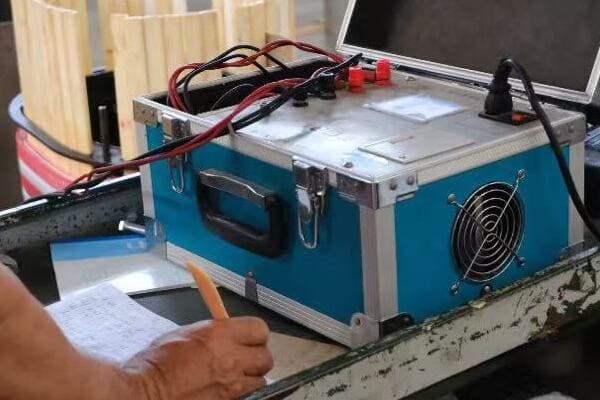
Key Scenarios for Using Circuit Breakers
Let’s explore the main applications and advantages of circuit breakers:
- Residential and Commercial Electrical Systems
- Industrial Motor Protection
- Systems Requiring Frequent Switching or Reset
- Applications Needing Adjustable Protection Settings
- Remote Operation and Monitoring Requirements
Residential and Commercial Electrical Systems
Providing accessible protection in buildings:
- Main service panels in homes and offices
- Branch circuit protection for lighting and appliances
- GFCI and AFCI breakers for enhanced safety
I recently oversaw the electrical renovation of an old apartment building. Replacing the outdated fuse boxes with modern circuit breaker panels not only improved safety but also significantly enhanced the residents’ ability to manage their electrical systems. The clear ON/OFF indicators and easy reset capability of circuit breakers were particularly appreciated by the tenants.
Industrial Motor Protection
Safeguarding critical machinery:
- Motor circuit protectors (MCPs) for short circuit protection
- Thermal-magnetic breakers for overload and short circuit protection
- Electronic trip units for precise protection and data logging
During a recent factory automation project, we implemented a comprehensive motor protection scheme using circuit breakers. The ability to adjust trip settings for different motor sizes and starting characteristics proved invaluable in optimizing the protection while minimizing nuisance tripping during normal operations.
Systems Requiring Frequent Switching or Reset
Managing dynamic electrical loads:
- Lighting control systems in commercial buildings
- Temporary power distribution in construction sites
- Laboratory equipment with varying power requirements
Here’s a quick overview of circuit breaker applications in different sectors:
| Sector | Application | Breaker Type | Key Advantage |
|---|---|---|---|
| Residential | Main panel | MCB | Easy reset, clear status indication |
| Commercial | Lighting control | MCCB with aux contacts | Remote operation capability |
| Industrial | Motor protection | MCP | Adjustable magnetic trip for inrush current |
| Data Center | Power distribution | Electronic trip MCCB | Data logging and remote monitoring |
Applications Needing Adjustable Protection Settings
Tailoring protection to specific needs:
- Variable frequency drive (VFD) protection in HVAC systems
- Generators with varying load profiles
- Critical process equipment requiring precise coordination
Remote Operation and Monitoring Requirements
Enhancing control and diagnostics:
- Smart circuit breakers in building management systems
- Remote-controlled breakers in utility substations
- Breakers with communication capabilities for industrial IoT applications
Key points about when to use circuit breakers:
- They are standard in residential and commercial electrical systems
- Circuit breakers excel in industrial motor protection applications
- They’re ideal for systems requiring frequent manual operation or reset
- Adjustable settings make them suitable for complex protection schemes
- Remote operation and monitoring capabilities enhance system management
In my experience, the versatility of circuit breakers often makes them the preferred choice in complex electrical systems. I recall a project involving a large manufacturing facility where we initially considered a mix of fuses and circuit breakers. After analyzing the facility’s operational needs, including frequent maintenance activities and the desire for remote monitoring, we decided to standardize on circuit breakers throughout the plant. This decision not only simplified maintenance procedures but also allowed for the implementation of a comprehensive power management system, improving overall energy efficiency and reducing downtime.
For example, in a recent smart building project, we leveraged the capabilities of advanced circuit breakers with built-in metering and communication features. These devices not only provided traditional overcurrent protection but also enabled real-time energy monitoring, load shedding, and integration with the building’s automation system. This level of functionality and control would have been impossible to achieve with traditional fuses.
As we move on to discuss how to choose the right device for your project, remember that while circuit breakers offer significant advantages in many scenarios, the best choice always depends on your specific application requirements, budget constraints, and long-term operational needs.
Choosing the Right Device for Your Project – Buyer’s Checklist?
Are you feeling overwhelmed by the decision between fuses and circuit breakers for your electrical project? With so many factors to consider, how can you ensure you’re making the right choice? Let’s break down the key considerations into a practical checklist to guide your decision-making process.
Choosing between fuses and circuit breakers involves evaluating several factors: system voltage and current, required interrupting capacity, response time needs, reset requirements, space constraints, and long-term maintenance considerations. For sensitive electronics or high fault current applications, fuses might be preferable. For systems requiring frequent resets or adjustable settings, circuit breakers are often better. Consider the initial cost versus long-term expenses, including potential downtime and replacement needs. Always consult relevant electrical codes and standards for your specific application.

Key Considerations for Device Selection
Let’s explore the main factors to consider when choosing between fuses and circuit breakers:
- Electrical System Characteristics
- Protection Requirements
- Operational Considerations
- Physical and Environmental Factors
- Cost Analysis
Electrical System Characteristics
Matching the device to your system:
- Voltage rating: Must meet or exceed system voltage
- Current rating: Typically 125% of maximum continuous current
- Interrupting capacity: Must exceed maximum fault current
I recently consulted on a project where the initial protection devices were undersized for the available fault current. By carefully analyzing the system characteristics and potential fault scenarios, we were able to select properly rated devices, significantly enhancing the overall safety and reliability of the installation.
Protection Requirements
Ensuring adequate safeguards:
- Response time needs: Consider if ultra-fast protection is necessary
- Selectivity and coordination: How the device works with other protective elements
- Specific protection features: e.g., ground fault, arc fault detection
During a recent data center upgrade, we implemented a tiered protection scheme. This involved carefully selecting and coordinating circuit breakers with different trip characteristics to ensure that faults were isolated at the lowest possible level, minimizing disruption to critical systems.
Operational Considerations
Aligning with usage patterns and maintenance capabilities:
- Frequency of overcurrent events: Fuses for rare events, breakers for frequent occurrences
- Reset requirements: Consider if manual reset is feasible or if automatic reclosing is needed
- Monitoring and control needs: Circuit breakers offer more options for integration
Here’s a quick decision guide based on operational factors:
| Factor | Prefer Fuse | Prefer Circuit Breaker |
|---|---|---|
| Overcurrent Frequency | Rare | Frequent |
| Reset Needs | Replacement acceptable | Quick reset required |
| Remote Operation | Not needed | Desired |
| Adjustable Settings | Fixed protection sufficient | Flexibility needed |
Physical and Environmental Factors
Adapting to installation constraints:
- Available space: Fuses generally more compact
- Environmental conditions: Temperature, humidity, vibration tolerance
- Accessibility: Consider ease of replacement or reset
Cost Analysis
Balancing initial and long-term expenses:
- Initial purchase cost
- Installation expenses
- Potential downtime costs
- Long-term maintenance and replacement considerations
Key points for device selection:
- Match electrical ratings to your system characteristics
- Consider specific protection requirements and response time needs
- Evaluate operational factors like reset frequency and remote control needs
- Account for physical constraints and environmental conditions
- Analyze both initial and long-term costs
In my experience, the most successful protection schemes often involve a thoughtful combination of both fuses and circuit breakers. I recall a large industrial project where we initially planned to use circuit breakers exclusively for consistency. However, after a detailed analysis of each circuit’s specific needs, we ended up with a hybrid approach. We used circuit breakers for general distribution and motor circuits, but implemented specialized fuses for sensitive electronic equipment and high-fault-current areas. This tailored approach provided optimal protection while balancing cost and operational considerations.
For example, in a recent renewable energy project involving a solar farm with battery storage, we faced unique protection challenges. For the DC side of the solar arrays and battery systems, we chose specialized DC fuses designed for photovoltaic applications, offering fast response and high interrupting capacity. On the AC side and for general distribution, we implemented circuit breakers with advanced monitoring capabilities. This combination leveraged the strengths of both device types, ensuring comprehensive protection and facilitating efficient system management.
As we conclude our discussion, remember that choosing between fuses and circuit breakers is not always an either/or decision. Often, the best solution involves a strategic combination of both, tailored to the specific needs of each part of your electrical system.
FAQs: Fuse vs Circuit Breaker Selection
To address some common questions about choosing between fuses and circuit breakers:
-
Can I replace a fuse with a circuit breaker?
While it’s possible in some cases, it’s not always advisable or permissible. Replacing a fuse with a circuit breaker requires careful consideration of the circuit characteristics, available fault current, and relevant electrical codes. In many cases, especially in older systems or specialized applications, the existing fuse may be specifically designed for that circuit. Always consult with a qualified electrician or engineer before making such a change. -
Which one is safer for my home?
Both fuses and circuit breakers can provide safe protection when properly selected and installed. Circuit breakers are more common in modern homes due to their ease of use and reset capability. They also offer additional safety features like GFCI and AFCI protection. However, properly rated fuses can be equally safe and may be preferred in certain applications for their faster response times. -
Do circuit breakers respond as fast as fuses?
Generally, fuses respond faster than circuit breakers, especially for high fault currents. This is due to the simple melting action of the fuse element compared to the mechanical operation of a circuit breaker. However, the difference in response time is often negligible for most household and light commercial applications. In critical applications where ultra-fast response is crucial, specialized fuses are often preferred. -
Why are fuses still used if breakers exist?
Fuses offer several advantages that make them preferable in certain applications:- Faster response times, especially for high fault currents
- More compact size, useful in space-constrained applications
- Often lower cost, especially in high-voltage or specialized applications
- No moving parts, potentially higher reliability in harsh environments
- Better current-limiting abilities in some cases
Fuses remain crucial in automotive applications, sensitive electronics protection, and certain industrial and high-power scenarios.
Conclusion
Choosing between fuses and circuit breakers depends on specific application needs, including response time, reset requirements, space constraints, and long-term operational considerations. Both devices offer unique advantages: fuses excel in speed and simplicity, while circuit breakers offer convenience and adjustability. Often, the best protection scheme involves a strategic combination of both types, tailored to each part of the electrical system.
Thank you for joining me in this exploration of fuses and circuit breakers. Stay curious, stay informed, and let’s keep pushing the boundaries of what’s possible in power distribution and electrical engineering.
Free CHBEB Transformer Catalog Download
Get the full range of CHBEB transformers in one catalog.
Includes oil-immersed, dry-type, pad-mounted, and custom solutions.
Quick Message
Request A free quote
We'd like to work with you
- +86 15558785111
- chbebgroup@chbebpower.com
- +86 15558785111
What We Do
CHINA BEI ER BIAN (CHBEB) GROUP, with 218 million in registered capital, originated from Beijing Beierbian Transformer Group. Headquartered in Beijing for R&D, it operates major production bases in Nanjing and Yueqing, producing high-quality products.
Latest Product
address
BeiJing
No 3,RongJing East Road,BeiJing Economic Technological Development Area,BeiJing,China
JiangSu
No 7️Xiangfeng Road,Jiangning,NanJing,JiangSu,China
WenZhou
No.211, Wei 16 Road, Industrial Zone, Yueqing, Wenzhou, Zhejiang, China.
XiangYang Industrial Zone ,YueQing,WenZhou,ZheJiang,China
contact us
- chbebgroup@chbebpower.com
- +86 13057780111
- +86 13057780111
- +86 15558785111
Copyright © Bei Er Bian Group

